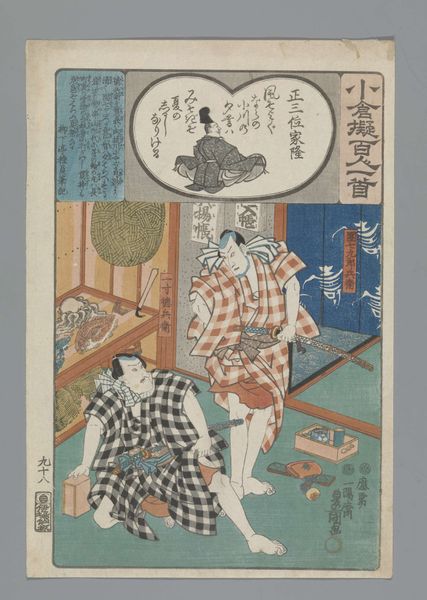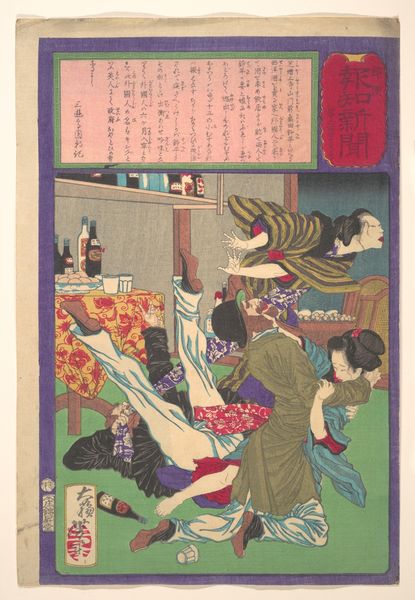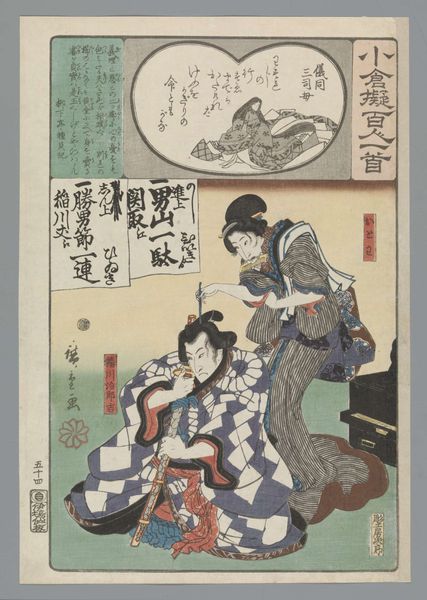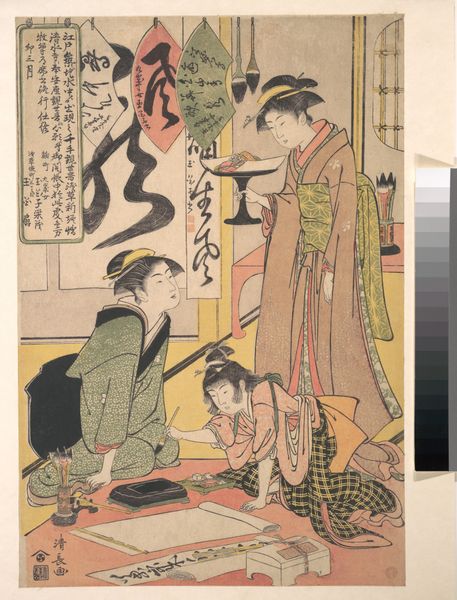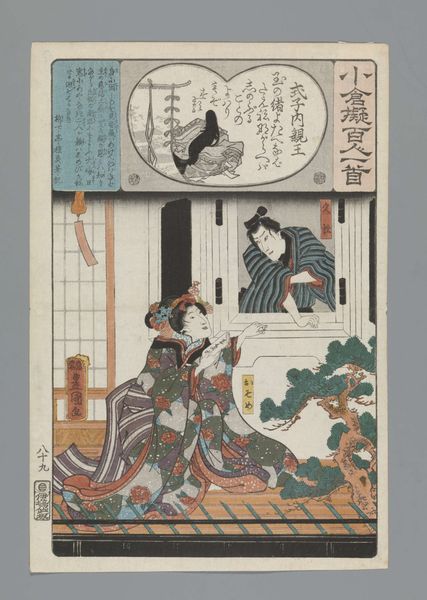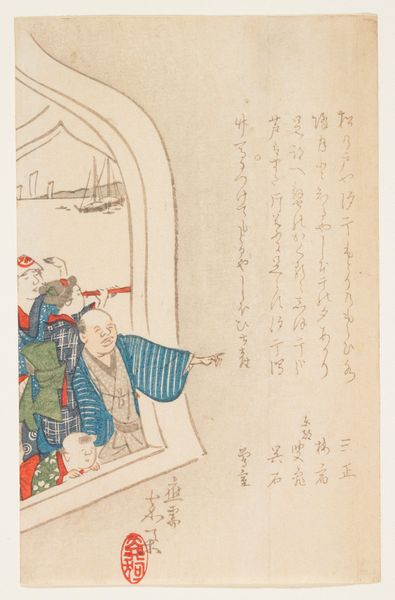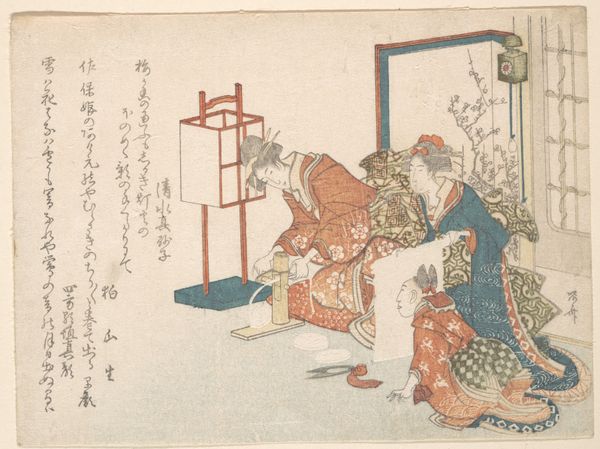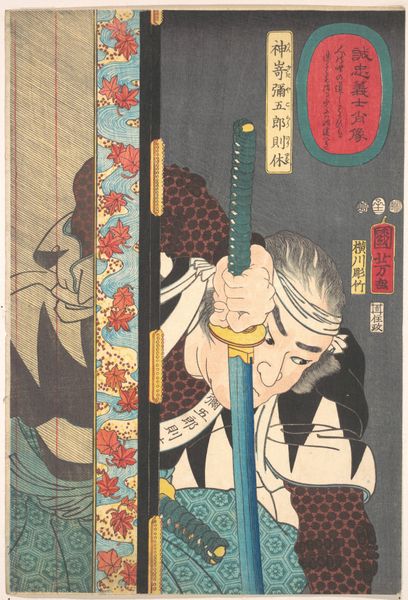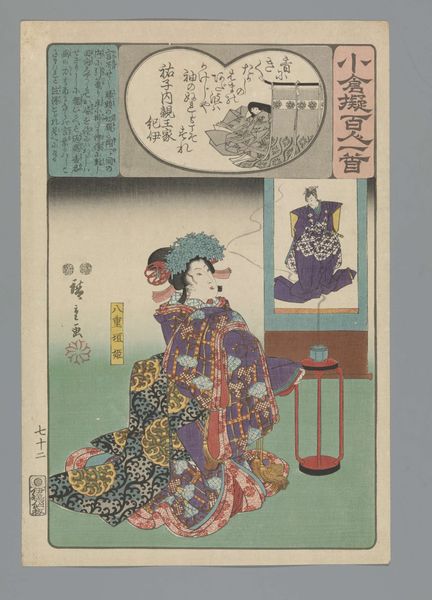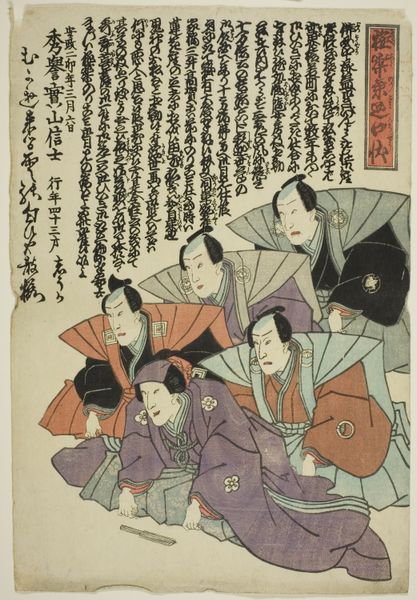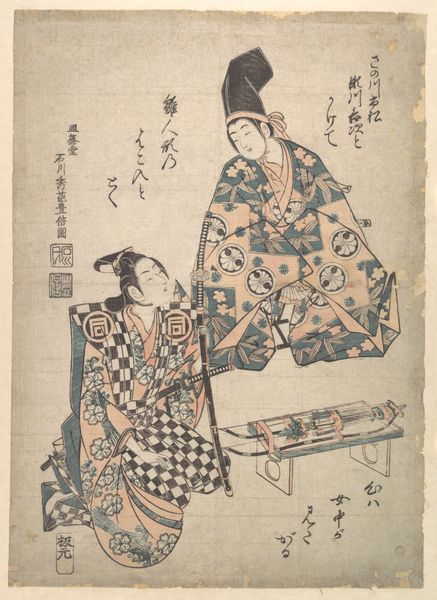
Memorial Portraits of the Actors Bando Shuka I, Arashi Otohachi III, and Ichikawa Danjuro VIII 1855
0:00
0:00
print, woodblock-print
#
portrait
# print
#
asian-art
#
ukiyo-e
#
figuration
#
woodblock-print
#
naive art
Copyright: Public Domain
Curator: Before us is an 1855 woodblock print titled "Memorial Portraits of the Actors Bando Shuka I, Arashi Otohachi III, and Ichikawa Danjuro VIII." It resides here at The Art Institute of Chicago. Editor: What strikes me first is the dreamlike color palette—the spectral blues and purples imbue the scene with a ghostly quality, emphasized by the flattened perspective common in *ukiyo-e*. It almost feels like a scene pulled from a theatrical performance itself. Curator: Indeed. The memorial aspect is key. These are not straightforward likenesses, but rather stylized representations imbued with symbolic weight. Note the *onnagata* figure—a male actor specializing in female roles—seated in the lower left. His elaborate attire signals a heightened social status and a link to specific theatrical narratives. Editor: And what about the almost grotesque figure looming behind? Is that meant to be read literally, or is it also a symbol of some kind? Its exaggerated features contrast so sharply with the comparatively naturalistic portrayal of the actors. Curator: The monstrous figure is almost certainly a symbolic representation—perhaps of hardship, mortality, or even a particular character associated with the deceased. In Japanese iconography, such figures aren’t always negative; they can represent forces that, while fearsome, ultimately serve a protective or transformative function. And of course, death is an inescapable component of the actors' cultural memory. Editor: So, its presence doesn't necessarily connote something evil? Curator: Not necessarily, though the exact symbolism is up for scholarly debate. But beyond this, consider how the artist organizes the figures—the vertical stacking creates a spatial ambiguity, forcing us to confront different emotional planes at once. The inclusion of inscriptions are also part of the formal architecture, which invites us to pause over specific aesthetic and social traditions embedded in the very structure of the work. Editor: Thinking about this print formally, the muted yet striking palette enhances this contemplative atmosphere. And the stylized postures are so calculated, so visually rhythmic, that it’s tempting to consider the design more than a conventional commemorative portrait. Curator: It prompts reflection, doesn't it? We are left contemplating not just the individuals depicted but also the rich tapestry of cultural meanings and social roles attached to the Japanese performing arts. Editor: Absolutely. It’s an effective layering of formalism and symbolism. A fitting memorial indeed, rich in aesthetic and emotional intelligence.
Comments
No comments
Be the first to comment and join the conversation on the ultimate creative platform.
